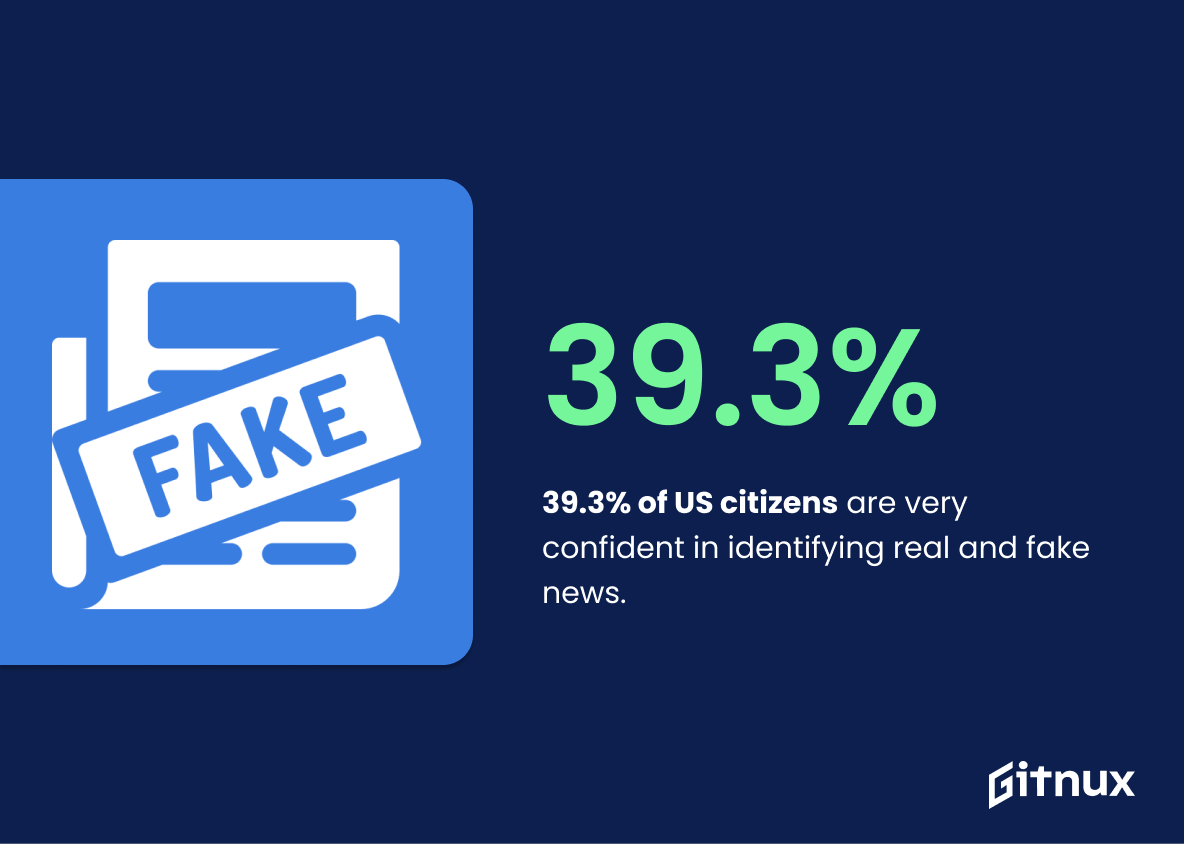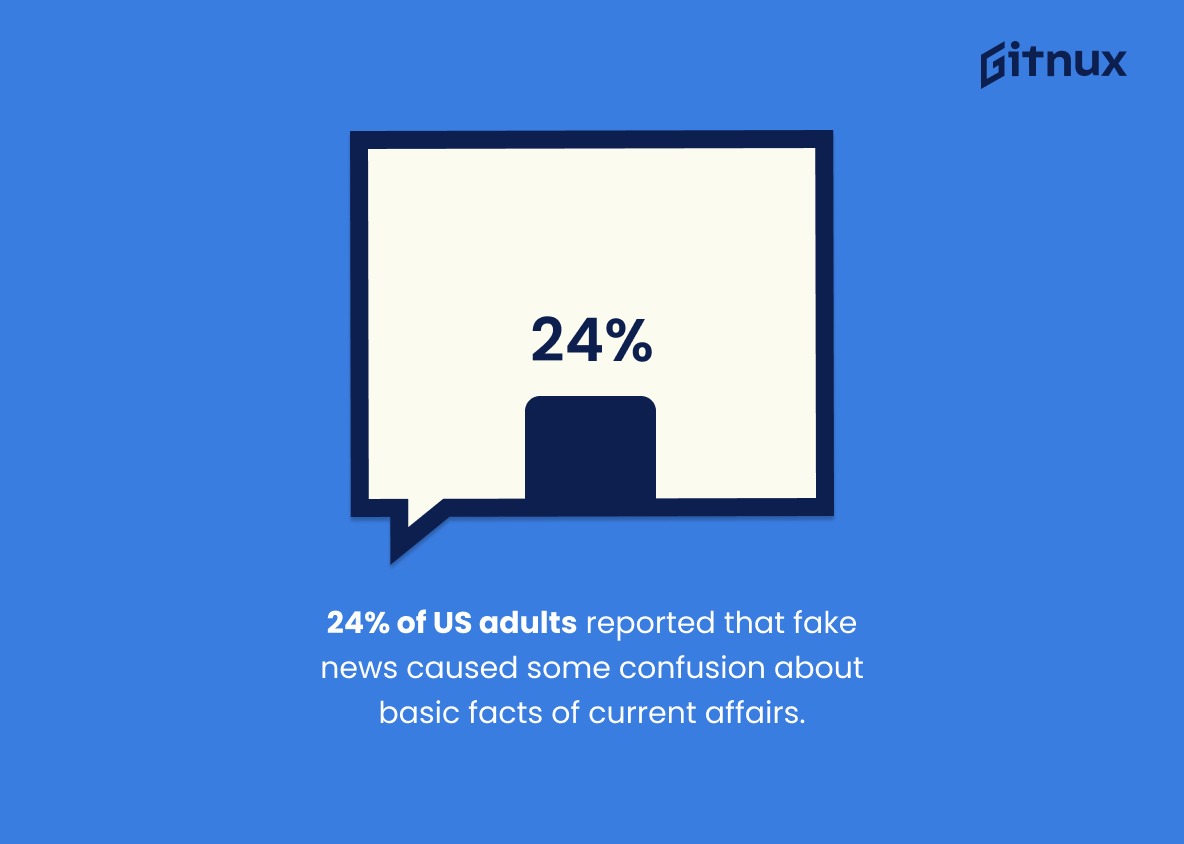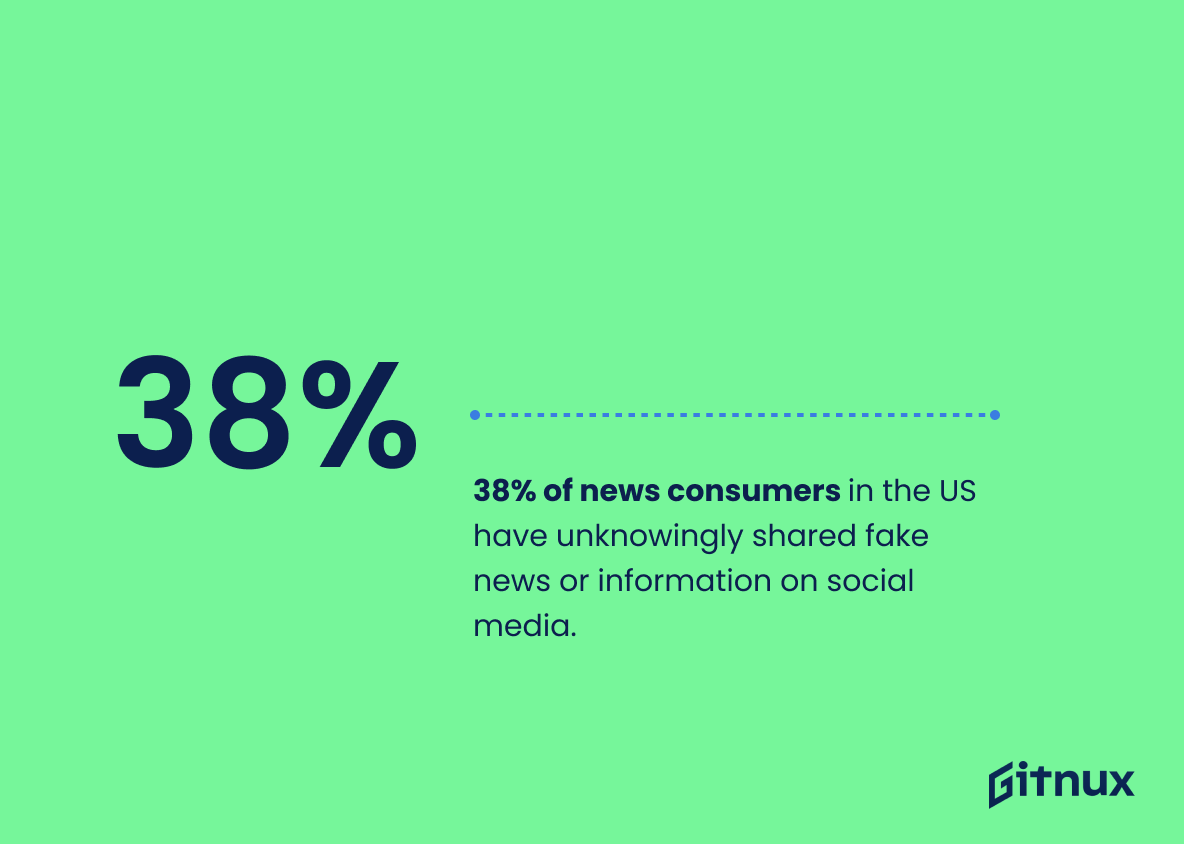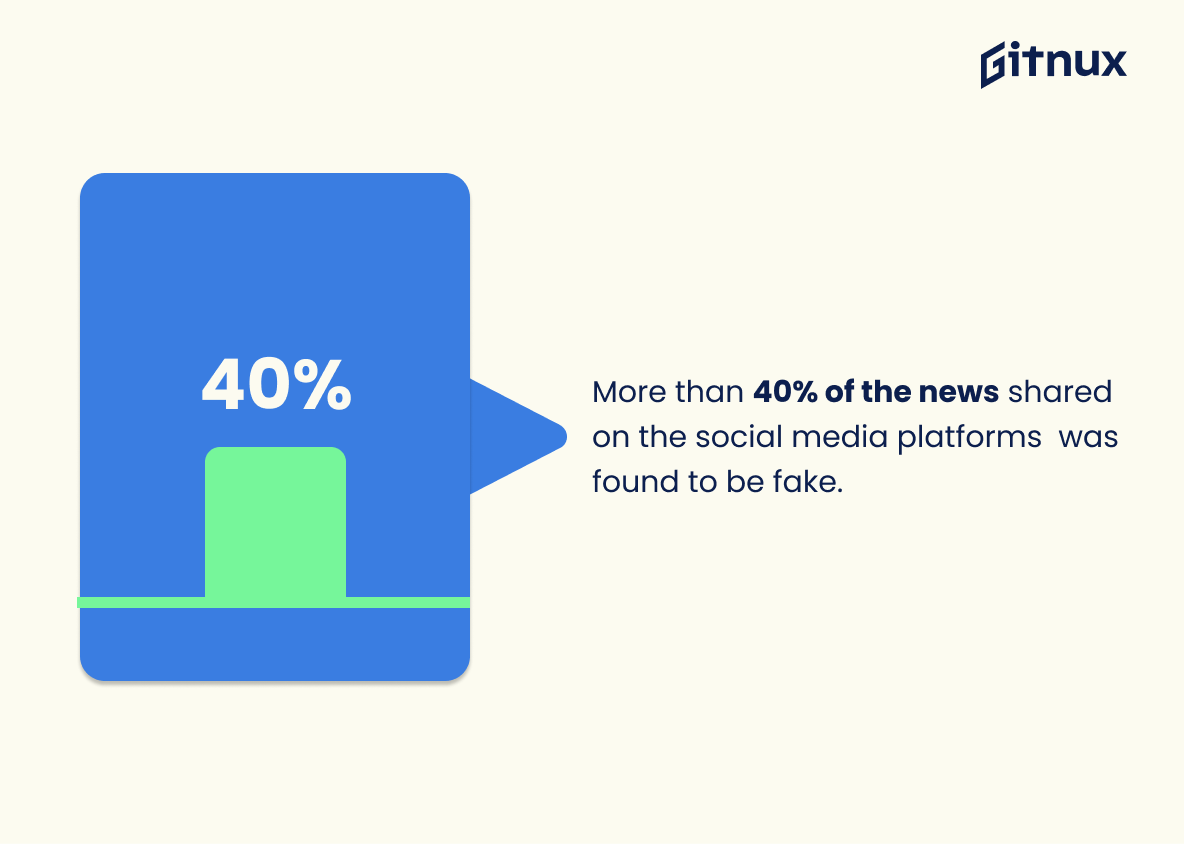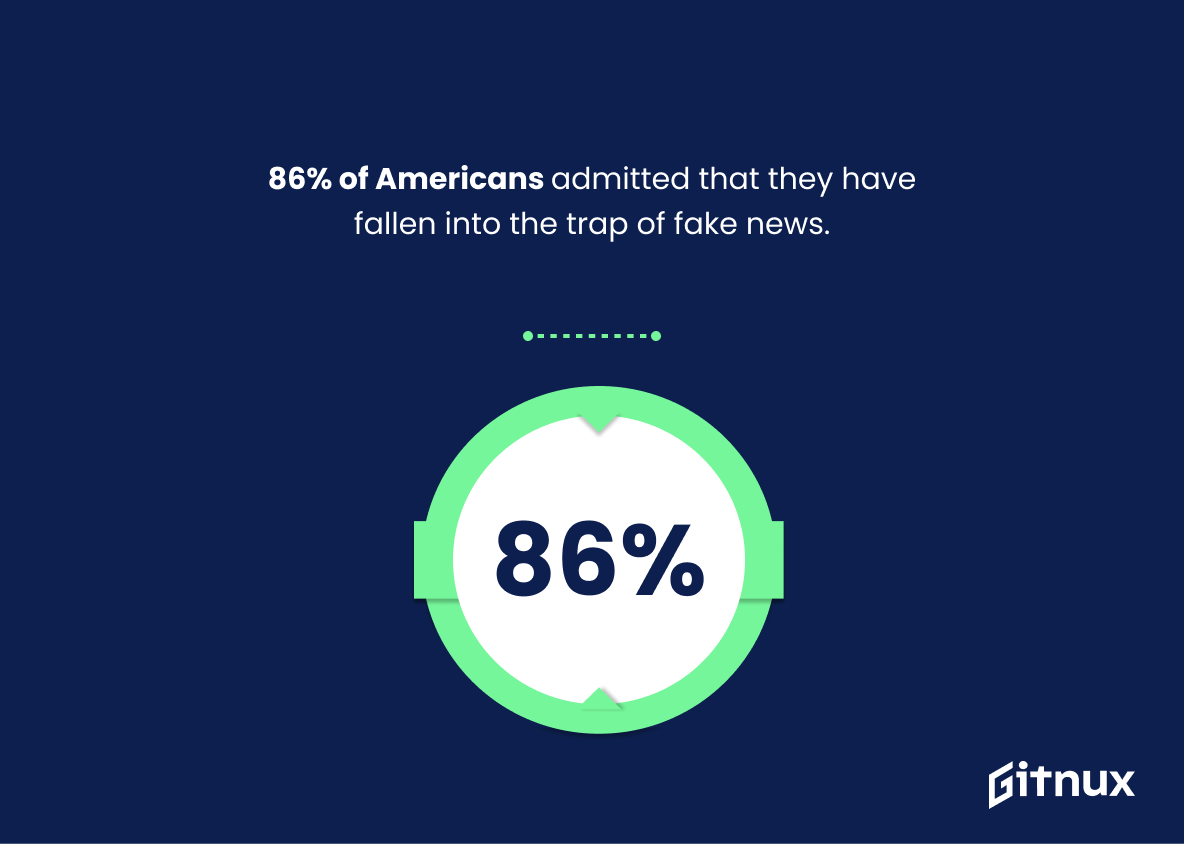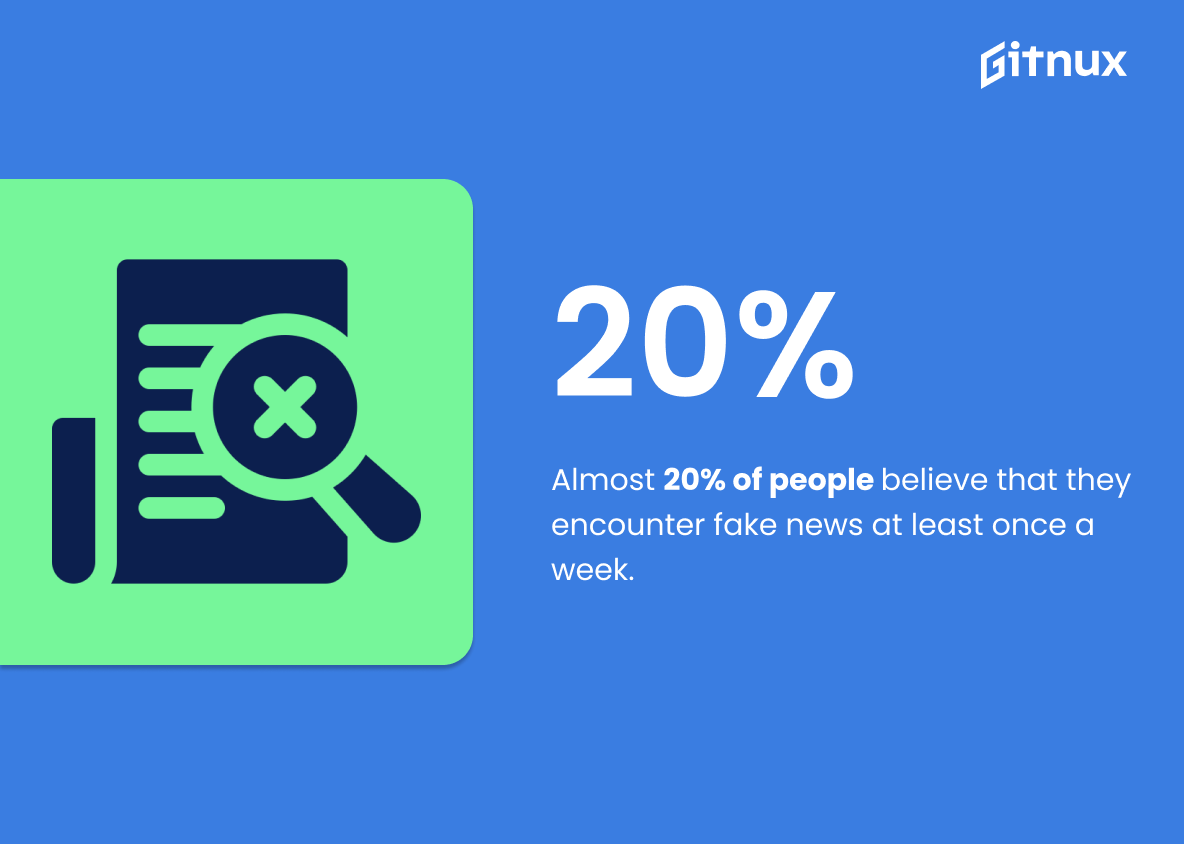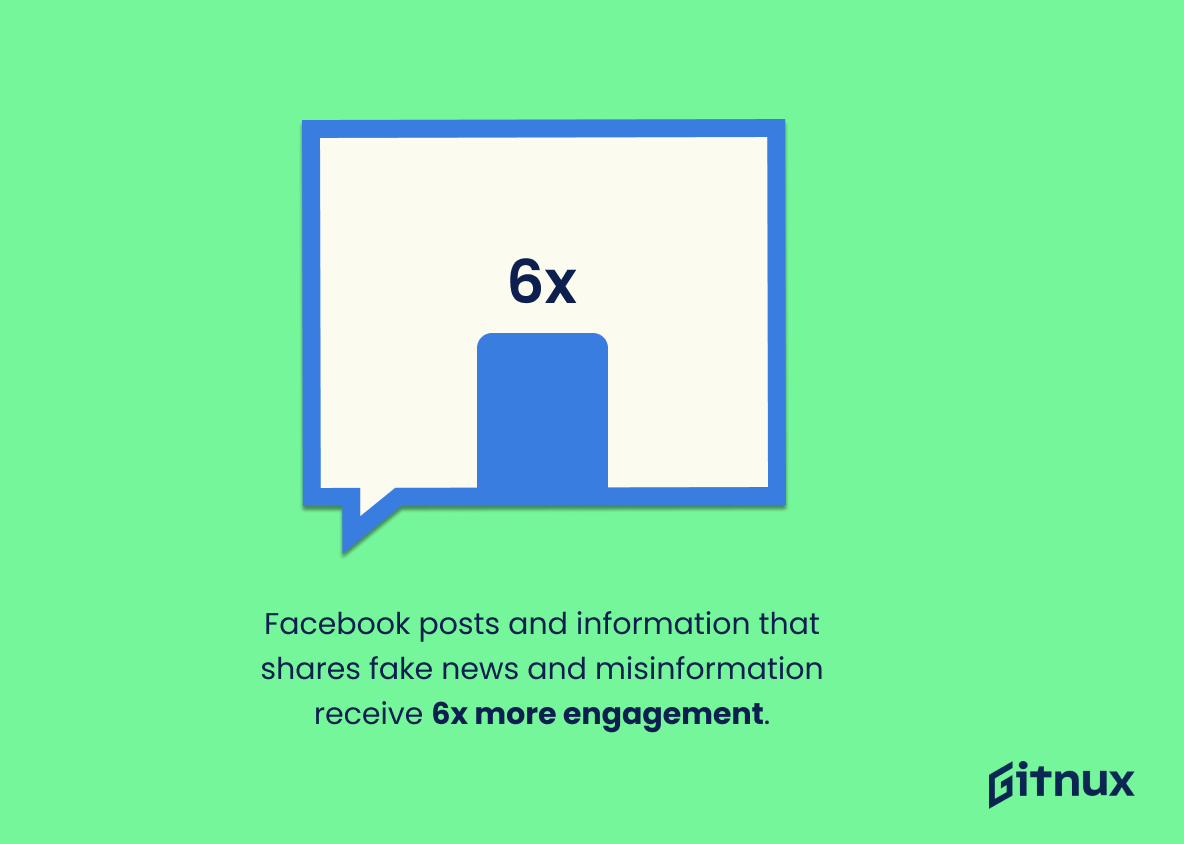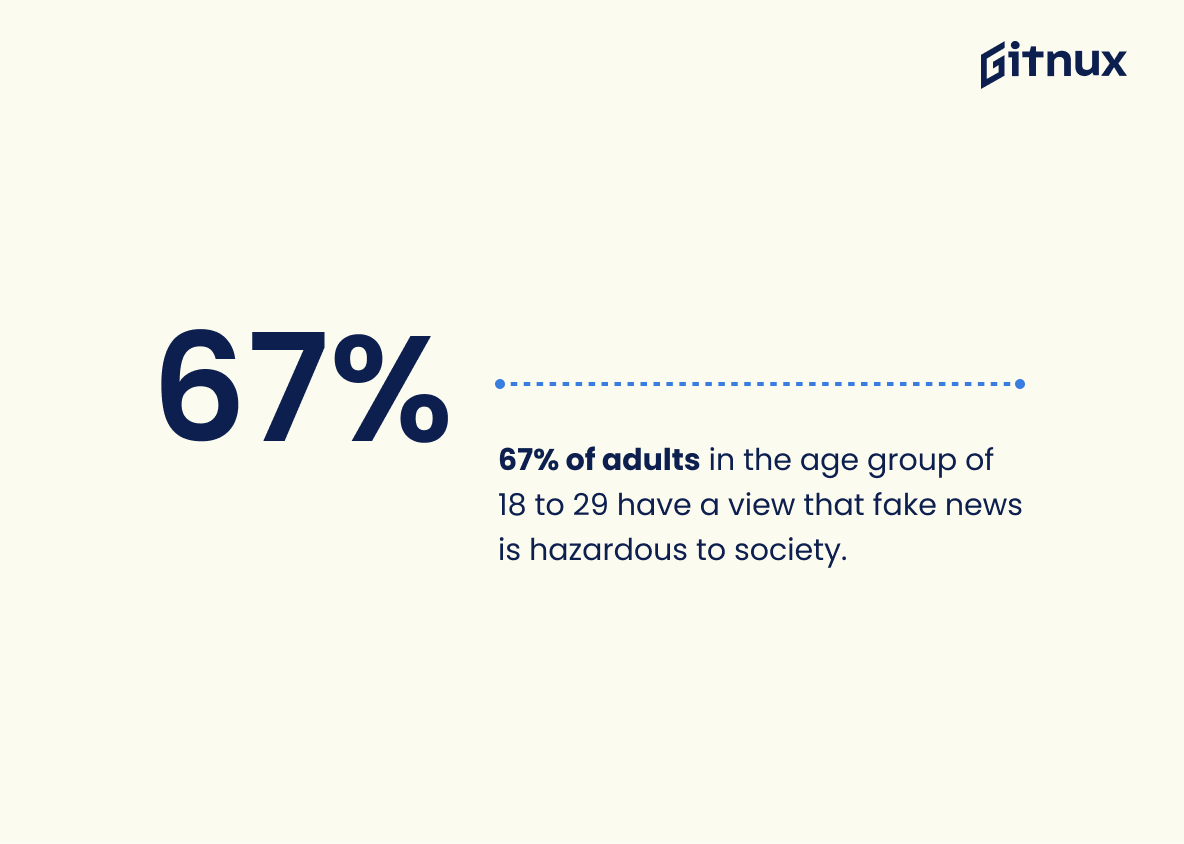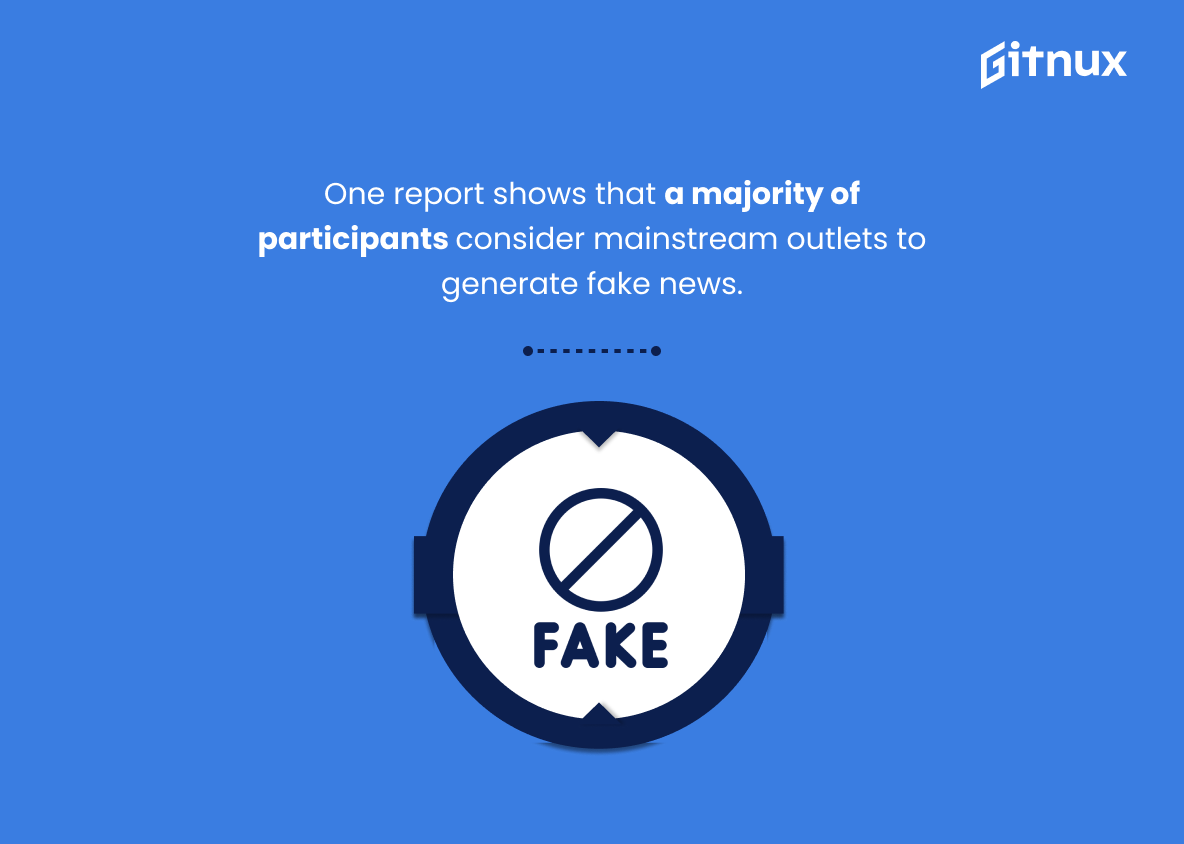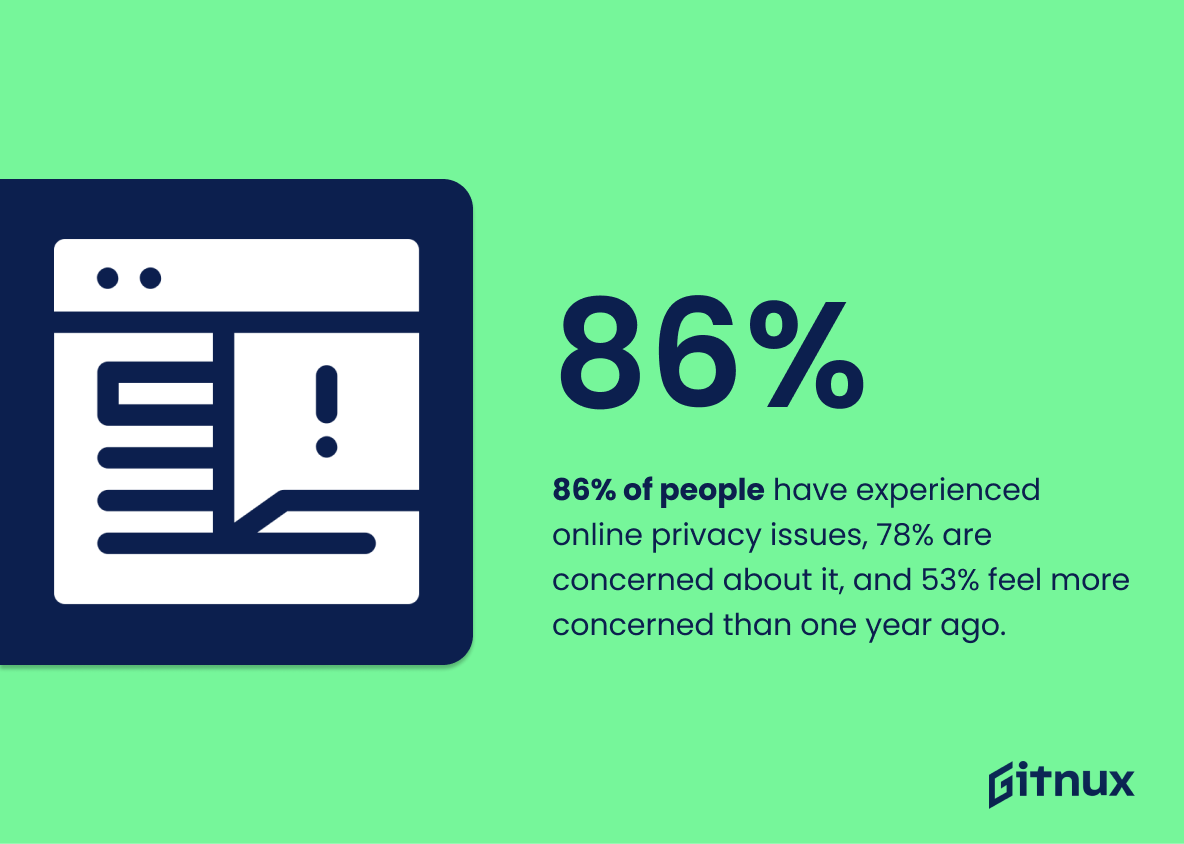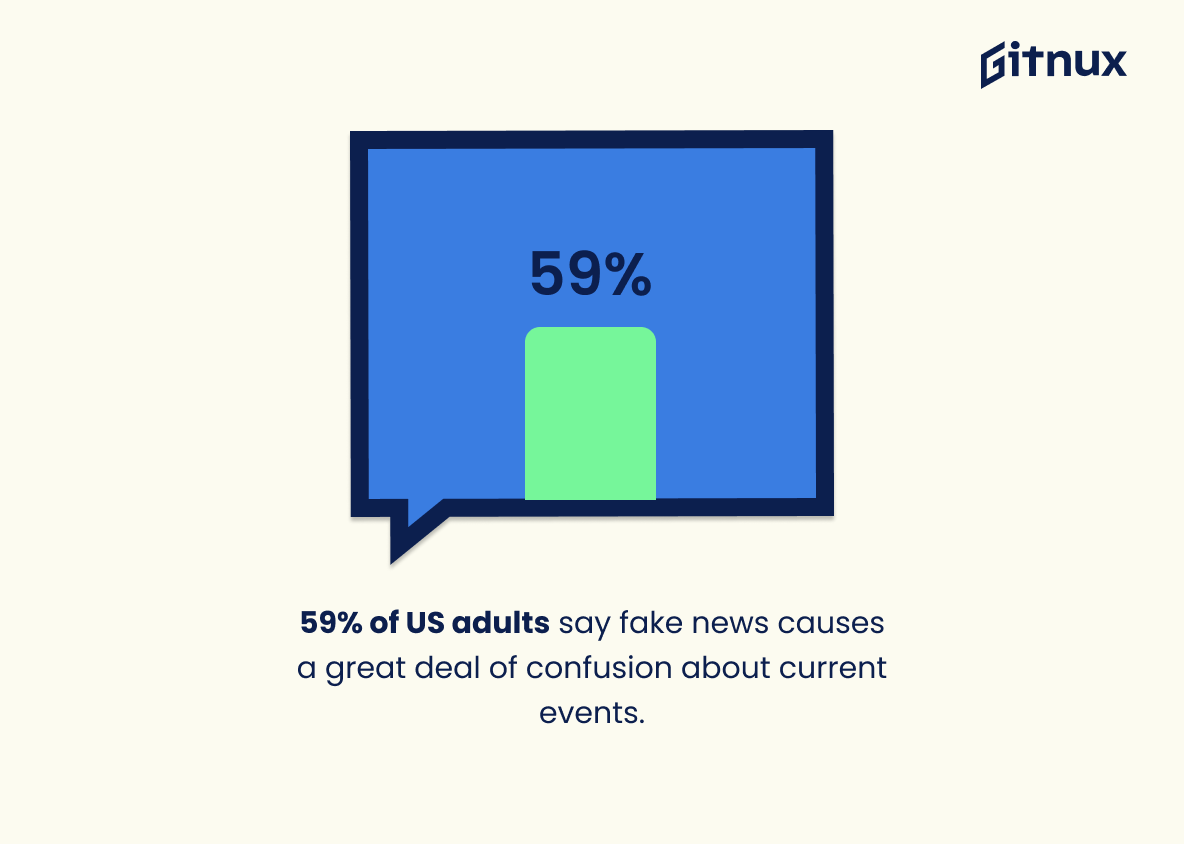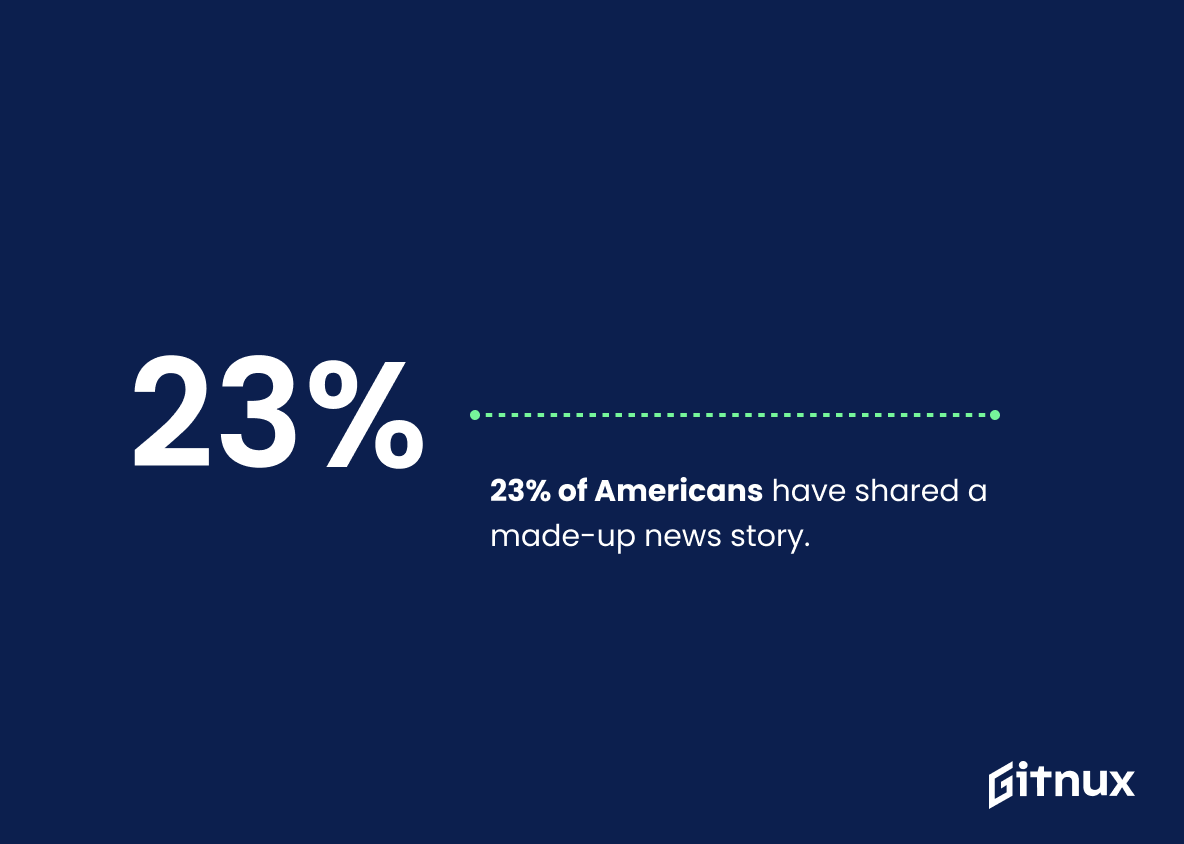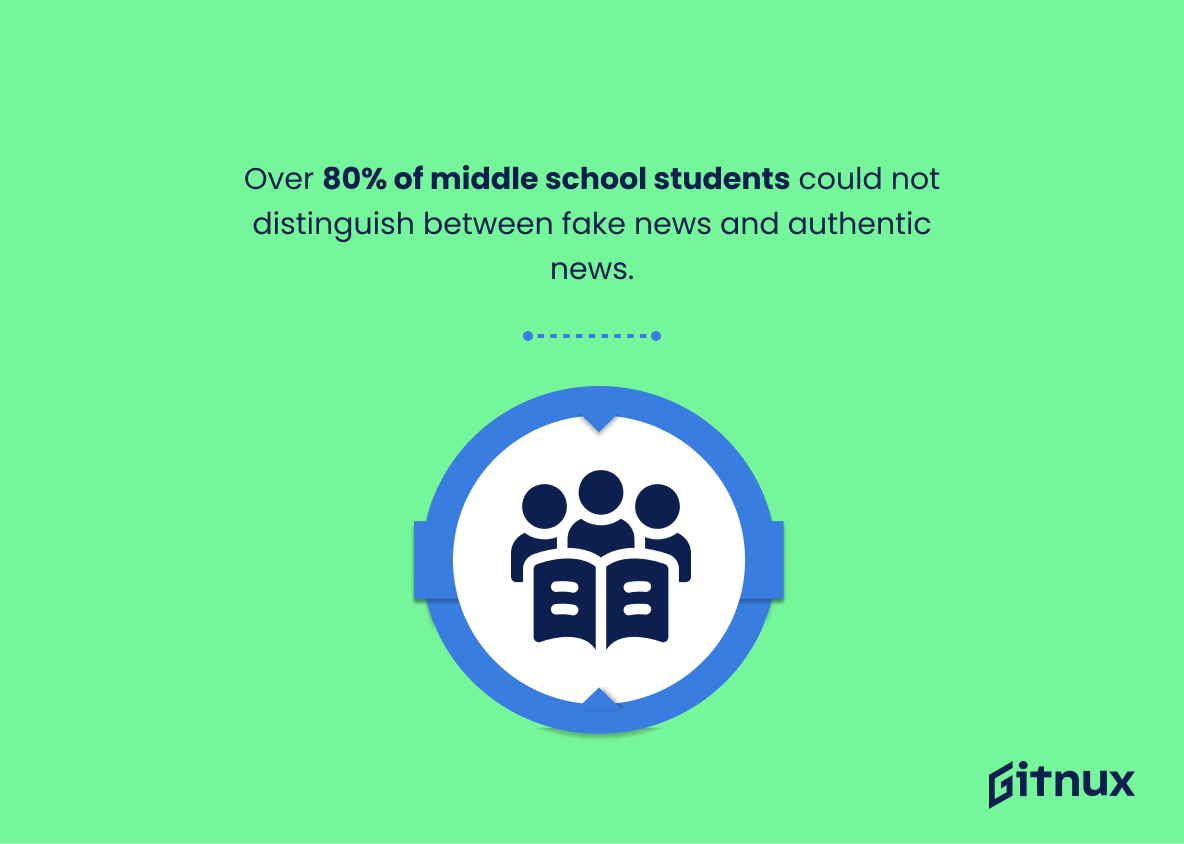Fake news has become a major issue in the past few years, and it’s only getting worse. With the rise of social media and the internet, it’s easier than ever for false information to spread quickly and widely. This has led to a growing concern about the impact of fake news on society, and it’s important to understand the facts and figures behind this phenomenon.
In this blog post, we will take a look at the latest fake news statistics and discuss what they mean for our society.
Fake News: The Most Important Statistics
24% of US adults reported that fake news caused some confusion about basic facts of current affairs.
38% of news consumers in the US have unknowingly shared fake news or information on social media.
Fake News: Statistics Overview
39.3% of US citizens are very confident in identifying real and fake news, 54% somewhat confident, and 6.6% are not confident at all.
While a majority of US citizens are confident in their ability to identify real and fake news, there is still a significant portion of the population that is not confident in their ability to do so. This statistic highlights the importance of providing education and resources to help citizens better identify real and fake news.
24% of US adults reported that fake news caused some confusion about basic facts of current affairs.
This shows that a large portion of the population is being misled by false information, which can lead to confusion and misunderstanding about important current events. This can have serious implications for society, as it can lead to a lack of trust in news sources and a lack of understanding of important issues.
38% of news consumers in the US have unknowingly shared fake news or information on social media.
This statistic highlights the prevalence of fake news in the US and how easily it can be spread on social media. It also shows how important it is to be aware of the sources of news and information when sharing on social media.
Check out our latest Social Media Addiction Statistics
More than 40% of the news shared on the social media platforms like WhatsApp, Facebook, Instagram, and Twitter was found to be fake.
Fake news can have serious consequences, such as creating inaccurate impressions of people or events, which can lead to misunderstandings and even conflict. Knowing that more than 40% of news shared on social media is potentially false or misleading can help people become more aware of what they are seeing and reading, and be more critical of the sources of information they are relying on.
86% of Americans admitted that they have fallen into the trap of fake news.
This information shows the prevalence of fake news in our society and the extent to which people can be influenced by it. It also highlights the need for education and awareness around the issue of fake news, as well as the need to take steps to reduce its spread.
Almost 20% of people believe that they encounter fake news at least once a week.
As more and more people rely on the internet and social media to get their news, it is important to be aware of the potential for encountering false information. This statistic should serve as a reminder to take steps to verify the accuracy of news sources and to think critically about any news that may be encountered.
Facebook posts and information that shares fake news and misinformation receive 6x more engagement than reputed authentic news sources.
People are far more likely to engage with information that is not backed up by facts, and this has the potential to create a dangerous echo chamber of false information. This can lead to people forming false beliefs and making decisions based on these beliefs, which can have serious consequences.
67% of adults in the age group of 18 to 29 have a view that fake news is hazardous to society. 58% of adults over the age of 65 reported that fake news could highly affect society.
These numbers show the disparities between age groups when it comes to the perception and understanding of fake news. This statistic also highlights the need for education and awareness-raising on the issue of fake news, particularly among younger adults, in order to ensure that the public is equipped to identify and combat the spread of misinformation.
59% of the people have an opinion that tech companies should take a step to restrict the spread of false information online, even though it might limit the freedom of the information.
A majority of people recognize the need for tech companies to take action in order to protect people from false information online. In a world where people increasingly rely on technology and social media for information, it’s important that tech companies are taking steps to ensure that users are not being exposed to inaccurate or misleading information. This statistic indicates that people understand the importance of controlling the spread of false information online, and it is a reminder that tech companies need to stay vigilant in order to protect their users.
One report shows that a majority of participants consider mainstream outlets to generate fake news.
The public is increasingly skeptical of the news they are receiving from mainstream outlets. This could lead to a lack of trust in news sources, which could have a negative impact on the public’s ability to make informed decisions.
86% of people have experienced online privacy issues, 78% are concerned about it, and 53% feel more concerned than one year ago.
These numbers show that people are becoming increasingly aware of online privacy issues and are taking steps to protect themselves. This is important because it means that people are more likely to be aware of the potential for Fake News and take steps to verify the information they consume.
Supplementary Statistics
59% of US adults say fake news causes a great deal of confusion about current events.
This shows that a majority of US adults are aware of the confusion caused by fake news, and that it is a serious issue that needs to be addressed. This statistic is a reminder that fake news has the potential to cause serious harm to the public’s understanding of current events, and that it is important to take steps to combat it.
23% of Americans have shared a made-up news story.
It highlights the need for greater awareness and education about the dangers of sharing false information, and the importance of verifying the accuracy of news stories before sharing them.
In 2018, 33% of US respondents said they often/very often came across fake news.
This serves as a warning to media outlets to be more responsible in their reporting and to take steps to verify the accuracy of their stories.
Over 80% of middle school students could not distinguish between fake news and authentic news.
There is a high importance of educating young people on how to identify and combat fake news, so that they can become informed and responsible citizens.
64% of UK residents believe that fake news is a serious problem in their country.
The majority of UK residents are aware of the issue and consider it to be a serious problem. This statistic is an important piece of evidence to include in a blog post about Fake News Statistics, as it demonstrates the gravity of the situation.
63% of Chinese and 58% of Brazilians believe that fake news has remained constant or decreased during the COVID-19 pandemic.
A lot of people in two of the world’s largest countries are aware of the prevalence of fake news and are confident that it has not increased during the pandemic. This indicates that people are taking steps to be more informed and vigilant about the news they consume, which is an important step in combating the spread of misinformation.
89% of Australians are concerned about the spread of fake news on the internet.
Most Australians are aware of the dangers of fake news and are taking steps to protect themselves from it. This statistic is important to include in a blog post about Fake News Statistics because it demonstrates the level of concern that Australians have about the issue and the need for further action to be taken to combat it.
25% of people believe fake news influenced the 2016 US Presidential election.
This statistic is a stark reminder of the power of fake news and its potential to shape public opinion and influence the outcome of elections. It highlights the need for greater awareness and education about the dangers of fake news, and the importance of verifying the accuracy of news sources before sharing them.
39% of US adults receive their news from Facebook, where fake news is more prominent.
This highlights the need for greater awareness and education about the dangers of fake news, and the importance of verifying information before sharing it.
Exposure to fake news during the US election was mostly concentrated among 10% of the population.
A small portion of the population was exposed to a disproportionate amount of false information, which could have had a significant impact on the election results. It also serves as a warning that fake news can be used to manipulate public opinion and should not be taken lightly.
66% of people stated that they’re more likely to trust news sources with a long history.
This is an important factor to consider when discussing Fake News Statistics, as it suggests that people are more likely to trust sources that have been around for a while, and are less likely to trust sources that are new or unfamiliar. This could be a sign that people are more aware of the dangers of Fake News, and are taking steps to ensure that they are getting their news from reliable sources.
71% of Indian residents think that social media sites are responsible for stopping the spread of fake news.
This demonstrates the level of trust that Indian residents have in social media sites to combat the spread of false information. It also highlights the importance of social media sites in the fight against fake news, and the need for them to take responsibility for the content they share.
84% of people in Italy find it difficult to recognize fake news.
The majority of people in the country are having difficulty distinguishing between real and false information, which is a worrying sign for the accuracy of news in the country. This statistic is an important piece of evidence to consider when discussing the impact of fake news in Italy, and it should be taken into account when discussing the issue.
57% of people in Germany find it easier to trust newspapers than online news.
This suggests that the majority of people in Germany are more likely to trust traditional newspapers than online news, which could be a reflection of the prevalence of Fake News on the internet. This statistic is an important factor to consider when discussing Fake News Statistics, as it highlights the need for reliable and trustworthy sources of information.
52% of Americans believe online platforms have a responsibility to remove fake news from their sites.
A majority of Americans believe that these platforms have a duty to take action against the spread of false information. This is an important point to consider when discussing the prevalence of fake news and the measures that can be taken to combat it.
In a study, 62% of participants correctly identified a fake news headline, while 84% correctly identified a real news headline.
Even with a relatively high percentage of people correctly identifying real news headlines, a significant portion of people are still unable to distinguish between real and fake news. This is a worrying trend that needs to be addressed.
Conclusion
In conclusion, fake news statistics are alarming and should be taken seriously. Fake news has become a major issue in today’s society and can have serious consequences. It is important to be aware of the prevalence of fake news and take steps to protect yourself.
Additionally, it is important to be aware of the sources of information you are consuming and to be critical of the information you receive. By doing this, you can help to reduce the spread of fake news and protect yourself from its harmful effects.
References
Statista: “Level of confidence in distinguishing between real news and fake news among adults in the United States as of December 2020”, cited February 2023. (Source)
Statista: “Level of confusion caused by fake news about the basic facts of current issues and events in the United States as of March 2019”, cited February 2023. (Source)
Statista: “Share of people who have ever accidentally shared fake news or information on social media in the United States as of December 2020”, cited February 2023. (Source)
Journolink: “Fake News by Numbers – How Big is the Problem?”, cited February 2023. (Source)
Reuters Institute: “Digital News Report”, cited February 2023. (Source)
Reuters Institute: “Measuring the reach of “fake news” and online disinformation in Europe”, cited February 2023. (Source)
NWACC: “Fake News vs. Real News: Statistics”, cited February 2023. (Source)
Ipsos: “Fake News: A Global Epidemic Vast Majority (86%) of Online Global Citizens Have Been Exposed to it”, cited February 2023. (Source)
